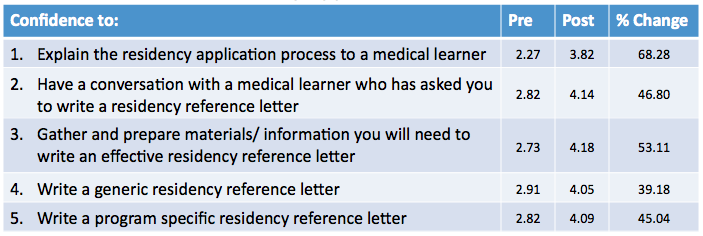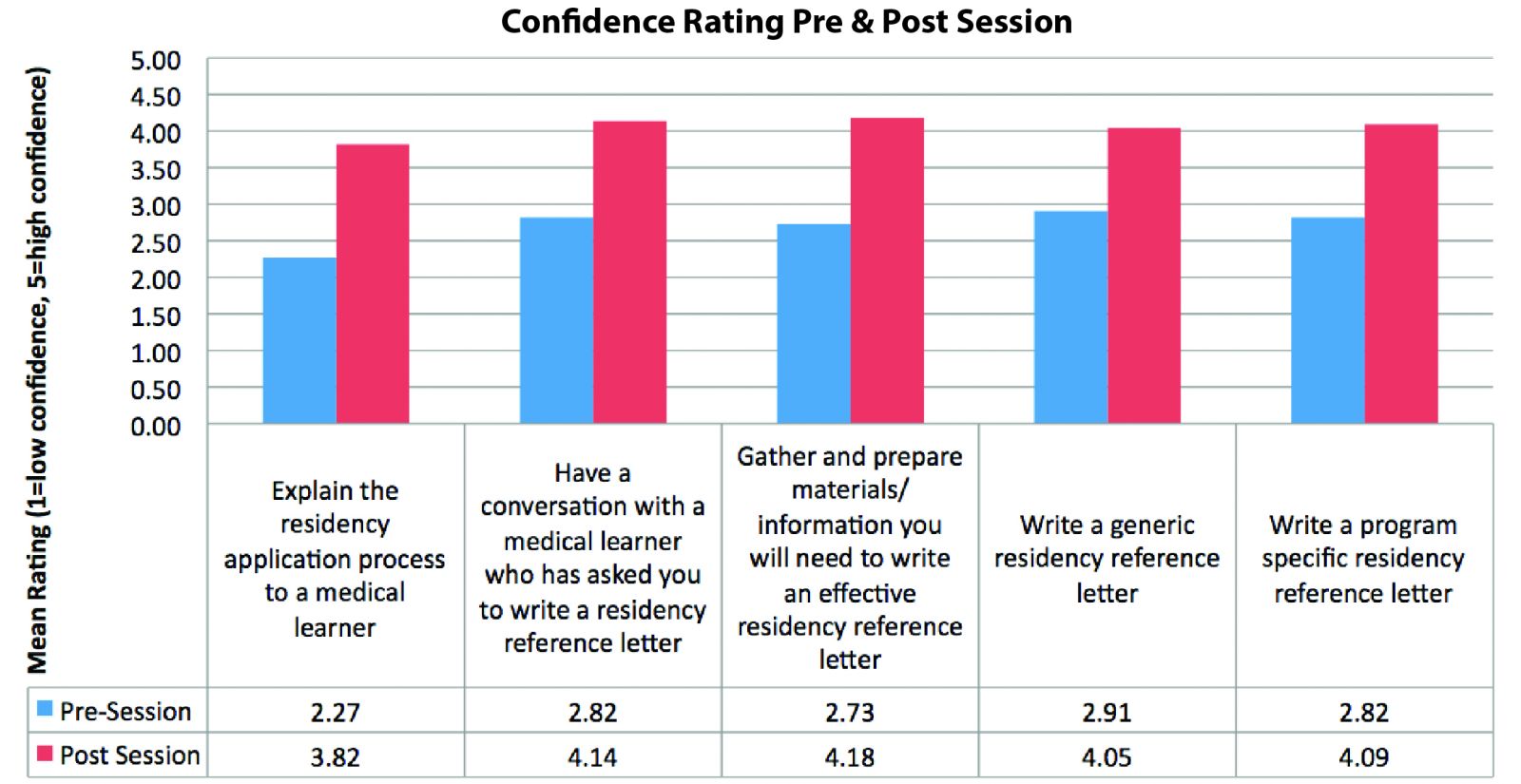


Theme
3JJ Staff development
INSTITUTION
Faculty of Medicine, University of Toronto, Toronto, Ontario, Canada
Trillium Health Partners, Mississauga, Ontario, Canada


Post Graduate Training Application: A Competitive Process
- The Canadian Resident Matching Service (CaRMS) provides a centralized national application and matching service to medical students for entry into postgraduate medical training throughout Canada
- In Canada, completion of a postgraduate training program is a mandatory requirement to be eligible to write the licensing examinations necessary to practice medicine
- Human Health Resources and the medical ‘job market’ is increasingly variable and the CaRMS process is highly competitive
- Every year, some students don’t match to their preferred programs and some students don’t match at all
- Being optimally prepared for the application process is essential: this phase of the career continuum is a major source of anxiety for students; it is a high-stakes situation.
- Application documentation includes transcripts, personal statements, completed electives, and letters of reference
Letters of Reference are a key component to help a student highlight their strengths and distinguish themselves from other applicants
Challenges for New Faculty
- Faculty clinical supervisors provide letters of reference upon request from a student
- In our newly opened regional expansion campus: Mississauga Academy of Medicine (MAM) and Trillium Health Partners, as part of the University of Toronto Faculty of Medicine, some of our new faculty had limited experience with the application process and with writing letters of reference
- Students assigned to this regional campus for their core rotations feared they would be at a disadvantage in their applications because they would not have access to experienced academic faculty to provide effective reference letters
- In addition to the established career management support provided by Student Affairs, we identified a need to provide focused faculty development to orient new faculty to the application process, understand the role and importance of the letters of reference and facilitate confidence among both the students and the faculty
- Faculty needed accurate information, knowledge, skills and tools to fulfill their obligations; minimize risk and optimize their students’ success in the application process
- We needed to support faculty to be able to provide a high quality letter of reference
- We designed, implemented and preliminarily evaluated a unique Faculty Development (FD) Strategy
7 steps were followed to develop, implement, and evaluate a new Faculty Development Program to support new faculty to write effective letters of reference for undergraduate students as part of their application to post graduate training programs:
Step 1. We brought together a development team to design and deliver the faculty development sessions
Step 2. Program Development included:
- Identifying the tasks for the faculty, core content, and skills
- Surveying Post-Graduate Program Directors who represent the end user of the LOR
- Creating a toolkit with information about:
(a) selection process; (b) 17 tips for writing effective reference letters; and (c) 11 tips for Reference Letters conversation between the student and the faculty
Step 3. Piloted and evaluated the program with a group of new faculty at MAM
- We evaluated faculty confidence pre and post workshop using a Likart Confidence Scale
(1) No Confidence (3) Reasable Confidence, (5) Very High Confidence
Step 4. Revised materials and tool kit
Step 5. Offered the workshop at a national conference to obtain national input and consensus and revised the tip sheets accordingly
Step 6. Developed a stand alone tool kit based on the workshop to be distributed to faculty
Step 7. We continue to offer these workshops at the regional campus in time for the next CaRMS cycle
Step 1. Development Team
- Dr. Leslie Nickell, Associate Dean, Office of Health Professions Student Affairs, Faculty of Medicine, University of Toronto
Role: Student Affairs provides the program of support for all students in their application to post graduate training
- Dr. Glen Bandiera, Associate Dean, Postgraduate Medical Education (Admissions and Evaluation) and Mississauga Medical Education Advisor, Faculty of Medicine, University of Toronto
Role: Represents the end user of Letters of Reference by post graduate admission committees
- Dr. Pamela Coates, Academy Director, Mississauga Academy of Medicine, Faculty of Medicine, University of Toronto
Role: Perspective of faculty needs in a new regional expansion campus
- Dr. Jana Bajcar, Faculty Development Director, Mississauga Academy of Medicine, Faculty of Medicine, University of Toronto
Role: Faculty Development Program Design, Implementation, and Evaluation
Step 2. Program Development
- Explain the residency application process to a medical learner
- Have a conversation with a medical learner who has asked you to write a residency reference letter
- Gather and prepare materials/ information you will need to write an effective residency reference letter
- Write a generic residency reference letter
- Write a program specific residency reference letter
Survey of Post Graduate Program Directors. Click to view graphs >
Tool Kit for use during workshop
Tool Kit included:
- Background on the CaRMs process: CaRMs 101
- Career Management Resources for Undergraduate Medical Students
- Tips for writing effective reference letters
- Things to avoid in reference letters
- Tips for the “Reference Letter Conversations”
Step 3. Workshop Evaluation
- Offered the workshop 3 times
- Attendance = 33 new faculty
- Characteristics:
- 75% of faculty had experience in supervising 5 or more medical students
- Only 25 % of the faculty had written 5 or more letters of reference
“These two points indicate that experience supervising students does not automatically mean experience in writing letters of reference”
Participant confidence to support students through the residency application process

Confidence to explain the residency application process to a medical learner. Click to view graphs >
Confidence to write a generic residency reference letter. Click to view graphs >
Confidence to write a program specific residency reference letter. Click to view graphs >
Pre/post-session survey summary

Steps 4 and 5. Revision of materials and tool kit based on feedback
Tips for writing letter or reference
- >90% of the national stakeholders agreed with 10 tips
- 70-90% agreed with 6 tips
Tips for creating an effective conversation with students
- 100% agreed with 10 tips
Step 6. Developed a stand alone tool kit based on the workshop to be distributed to faculty
- CaRMS Critical Timelines
- Key Facts About CaRMS Match
- Overarching Messages for Students
- Process and Key Facts About Submitting Letters of Reference
- Tips for a Letter of Reference Conversation between Faculty and Student
- Tips for writing an effective reference letter
- Sample Letters – Good letter & Analysis
- Sample Letters – Poor letter & Analysis
- Sample of tool kit as pdf (hidden in the background)
Unintended outcome
- An unintended outcome has been that students want the tool kit and tip sheets to share with faculty who may have not had a chance to attend the faculty development workshops and to prepare themselves for the conversations with faculty and
- A formal tool kit has now been developed and will be widely shared with all faculty and students across both University of Toronto campuses.
- The faculty development strategy was well received and will continued to be offered
- Key information will be shared with students to help them prepare and approach faculty for reference letters
- Faculty development can address writing effective letters of reference which is an essential skill for new faculty
- Don’t assume teaching experience predicts letter of reference writing confidence
- The reference letter conversation between the faculty and student is as important as the letter and thus both faculty and students need to be prepared for this task
We would like to thank all the workshop participants who provided the feedback and guided our revisions.
Note: This project has been exempt from Research Ethics Review at the University of Toronto and any conclusions or learnings were not gained through research (for wide external application) but through a QI/QA project carried out in the local context.
 Send Email
Send Email